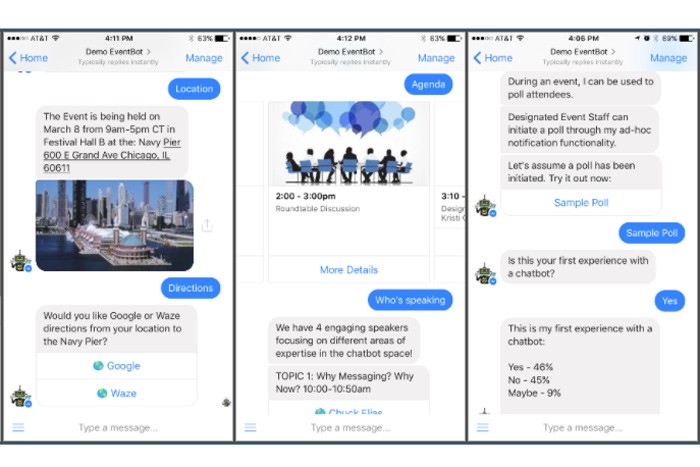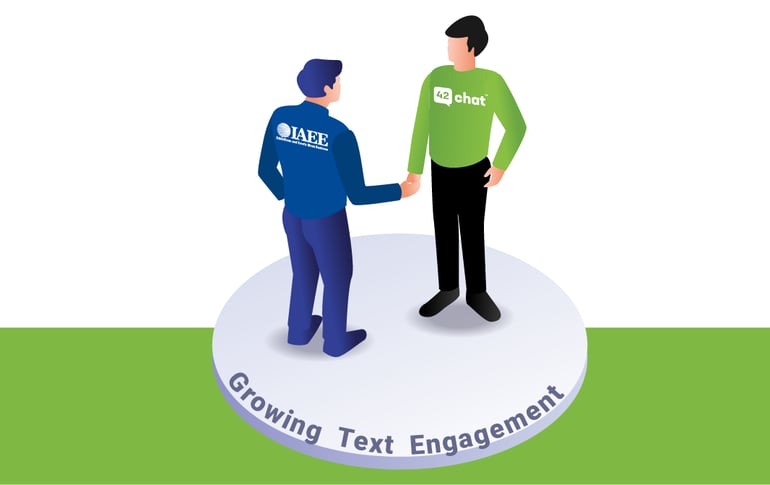Signs around BizBash Live: Florida provided instructions on how to use the chatbot, dubbed “Betty.” The bot received more than 1,600 questions regarding the one-day event.
Brands like American Express, KLM, Nordstroms, Whole Foods and more are using artificial intelligence to improve communication with their customers. And in doing so, increasing both customer engagement and retention. We in the event industry have taken notice. Chatbots are gaining popularity and usage at conferences, trade shows, and festivals—environments in which the automated system can answer questions from attendees faster and more efficiently than human-powered responses ever could.
If you are considering an event chatbot to help with event registration strategies, engagement and more – or if you're even just curious – BizBash, North America’s #1 source of ideas, news, and resources for event and meeting professionals, is a great place to start. Recently, BizBash interviewed chatbot experts, one of which was our very own Kristi Colleran from 42Chat. They shared these useful tips about how to most effectively use one for your next event.
1. Create a personality for your EventBot that aligns with your event’s brand, theme, or spirit. “Think about what you name it, the personality you give it, how information is presented,” Colleran says. “The bot can be an ambassador for your event.”
2. Make use of all of the available channels for your EventBot. For example, Colleran suggests planners launch the chatbot on the event website first since that is likely where attendees will go to learn about and register for the event. Use this as a “soft launch” opportunity to understand what people are asking and ensure the bot has appropriate content. Then, a few days before the event, add Facebook Messenger and SMS text-messaging options.
3. Since this is such new technology, communication is critical to ensure attendees know that the EventBot is available and that they understand what it can do. If the bot is integrated with your registration system, send a welcome message to attendees’ cell-phone numbers explaining how to use the chatbot and provide examples of the type of information it can provide.
“It’s not Siri and it’s not Amazon Echo. This is a focused chatbot that is supposed to answer event-specific questions, for example about speakers, attendees, setting up meetings,” Kashiv says. “We can add fun and humor, but it definitely has to be focused and people have to know that.”
4. For large events with different subsets of attendees, send customized messages based on those group’s needs. For example, send a different message to exhibitors versus buyers, explaining how the bot can help them.
5. Make sure the content in the EventBot is representative of the content that is being shared on other communication channels, such as Twitter, Facebook, etc.“We had a client that had a fun run and every time they tweeted about it, they would get questions in the bot,” Colleran says.
6. Monitor the comments being made in the EventBot. Guests may use it to alert staff to issues, such as that the parking lot is full or a room is hot. Staff can then communicate directly with the attendee through a private support channel. During the event, add information to the bot to answer questions that had not been anticipated.
7. Consider creating kiosks around the event—like self-service information counters—with a tablet that guests can use to access the EventBot. Guests may prefer not to use it from their text messaging.
8. Don’t overdo push notifications and provide clear instructions to attendees on how to opt out of them. “We encourage using them for high-value things, like notifying that a survey is available and providing a link to download it, or notifying about special elements such as the coffee bar is open. But use them cautiously, because people do get irritated,” Colleran says.
9. After the event, review how attendees used the EventBot, the type of information they requested, and any issues that arose. Use that data to make the bot “smarter” for the next time it will be used.




